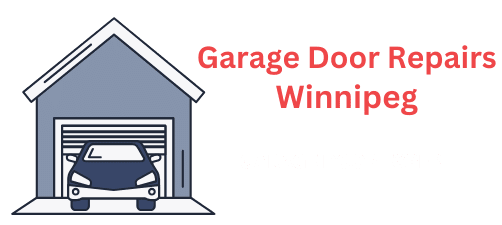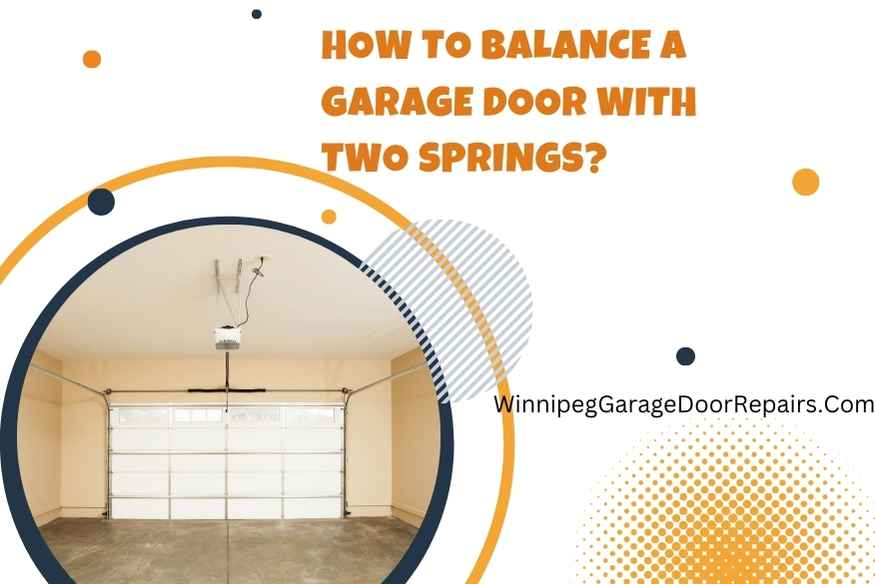Balancing a garage door with two springs is crucial for smooth operation and safety. This guide will show you the steps to ensure both springs are properly adjusted, preventing uneven wear and potential hazards. Whether you’re dealing with torsion or extension springs, understanding how to balance a garage door with side springs is essential.
By following these steps, you’ll not only improve the functionality of your door but also enhance its overall safety and longevity. Learn to identify imbalance signs and adjust your garage door springs for optimal performance, extending the life of your door.
Types of Garage Door Springs
Understanding the type of springs your garage door uses is the first step in diagnosing and fixing any balance issues.
A. Side-Mounted Extension Springs
When you encounter a scenario where the garage door closes but then opens again, it could be due to improperly adjusted side springs. These springs are easily identified by their location running along the horizontal tracks on each side of the door.
They work by extending, providing the force needed to lift the door. Adjusting their tension is crucial to balance the door properly and prevent it from reversing unexpectedly.
B. Torsion Springs
Torsion springs are mounted on a stationary metal shaft located above the door opening and are connected to cables that roll up on drums, lifting the door as they wind. These springs offer a more uniform operation than extension springs and are known for their durability and longevity.
Identifying the Issue
Identifying an unbalanced garage door involves noticing uneven opening or closing, difficulty in manual operation, or the door not staying open halfway.
These signs indicate that the springs may not be properly tensioned, leading to potential risks such as increased wear on components and safety hazards from unexpected closures. Recognizing these issues early can prevent further damage and ensure safe operation.
A. Signs of an Unbalanced Garage Door
- The door does not open or close smoothly, appearing to jerk or stagger.
- It may close too quickly, potentially slamming down.
- The door might be challenging to lift manually or fail to stay open on its own.
B. Risks of Operating an Off-Balance Garage Door
- Premature wear and tear on the door opener, springs, and other mechanical parts.
- Increased risk of the door closing unexpectedly, which could lead to injury or damage to property.
- Inefficient operation leading to higher energy costs and potential security risks.
Balancing Process
To balance a garage door, first identify if it has torsion or extension springs. For torsion springs, adjust the tension with winding bars; for extension springs, adjust the hooks to equalize tension.
Always ensure the door moves smoothly and stays in place when opened halfway. Safety is paramount, so wear protective gear and proceed with caution.
A. Adjusting Side-Mounted Extension Springs
- Recognizing Side-Mounted Extension Springs: Look for long springs running parallel to the door tracks.
- Determining the Problem and Solution: If the door leans to one side or closes unevenly, one spring may be tighter than the other. Adjusting the tension can correct this imbalance.
- Testing the Door for Functionality and Balance: After adjustments, manually open the door halfway. It should stay in place without assistance, indicating a balanced state.
B. Adjusting Torsion Springs
- Recognizing Torsion Springs: These springs are located above the garage door and can be identified by the metal shaft they are mounted on.
- Decreasing or Increasing Tension Based on the Issue: Use winding bars to adjust the tension. If the door drops when opened, increase the tension. Conversely, if it rises too quickly, decrease the tension.
- Overcoming Tension Troubles Through Careful Unwinding: Carefully adjust the springs, making minor adjustments and testing the door’s balance after each change.
- Balancing Uneven Doors by Adjusting Side Springs Individually: Sometimes, one side may need more adjustment than the other. Address each side as needed to achieve a balanced operation.
Safety Precautions and Professional Assistance
When adjusting garage door springs, prioritize safety by wearing protective gear and using proper tools. The high tension in springs poses serious injury risks. Additionally, applying the best lubricant for garage door tracks during maintenance can enhance the door’s operation and extend its life.
If unsure about the process or if adjustments don’t resolve the issue, seek professional help. Experts have the experience and equipment to safely balance your door, ensuring its longevity and your safety.
A. Importance of Safety When Dealing with Garage Door Springs
The high tension in these springs can cause serious injuries if not handled correctly. Always wear safety goggles and gloves, and ensure you have the correct tools and knowledge before attempting any adjustments.
B. When to Seek Professional Help for Spring Adjustments
If the balance issues persist after your adjustments, or if you’re uncomfortable performing these tasks, it’s wise to call in a professional. They have the experience and tools to safely and effectively restore your garage door’s balance.
Conclusion
Maintaining a balanced garage door is crucial for its smooth operation and longevity. Whether adjusting it yourself or seeking professional help, understanding the balance process enhances safety and efficiency.
A well-balanced door not only operates better but also reduces wear on its components, ensuring your garage door serves you reliably for years to come.







